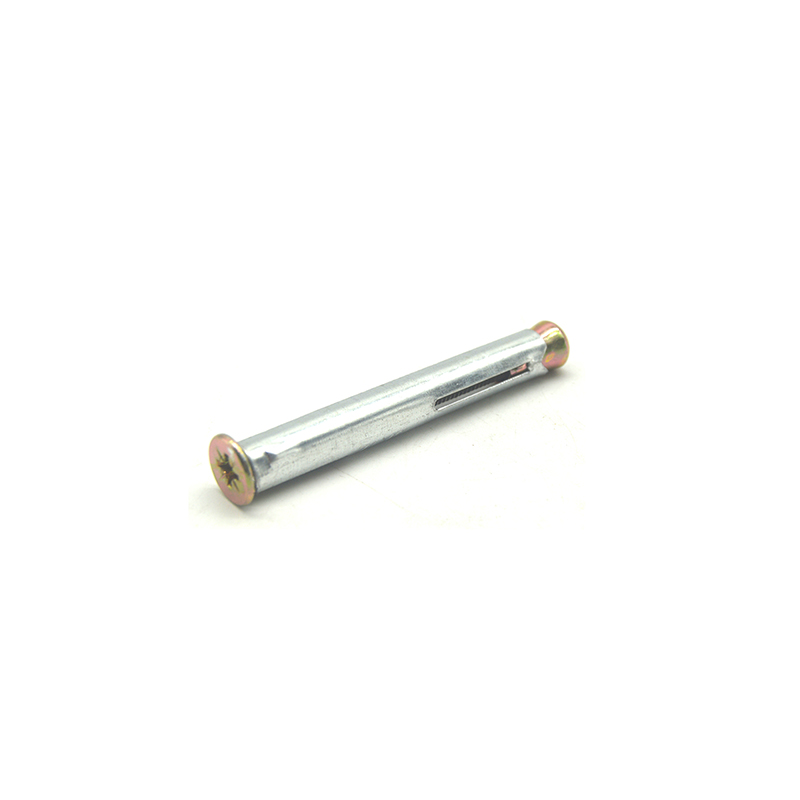- English
- Chinese
- French
- German
- Portuguese
- Spanish
- Russian
- Japanese
- Korean
- Arabic
- Irish
- Greek
- Turkish
- Italian
- Danish
- Romanian
- Indonesian
- Czech
- Afrikaans
- Swedish
- Polish
- Basque
- Catalan
- Esperanto
- Hindi
- Lao
- Albanian
- Amharic
- Armenian
- Azerbaijani
- Belarusian
- Bengali
- Bosnian
- Bulgarian
- Cebuano
- Chichewa
- Corsican
- Croatian
- Dutch
- Estonian
- Filipino
- Finnish
- Frisian
- Galician
- Georgian
- Gujarati
- Haitian
- Hausa
- Hawaiian
- Hebrew
- Hmong
- Hungarian
- Icelandic
- Igbo
- Javanese
- Kannada
- Kazakh
- Khmer
- Kurdish
- Kyrgyz
- Latin
- Latvian
- Lithuanian
- Luxembou..
- Macedonian
- Malagasy
- Malay
- Malayalam
- Maltese
- Maori
- Marathi
- Mongolian
- Burmese
- Nepali
- Norwegian
- Pashto
- Persian
- Punjabi
- Serbian
- Sesotho
- Sinhala
- Slovak
- Slovenian
- Somali
- Samoan
- Scots Gaelic
- Shona
- Sindhi
- Sundanese
- Swahili
- Tajik
- Tamil
- Telugu
- Ukrainian
- Urdu
- Uzbek
- Vietnamese
- Welsh
- Xhosa
- Yiddish
- Yoruba
- Zulu
- Kinyarwanda
- Tatar
- Oriya
- Turkmen
- Uyghur

สกรู drywall 4 ตัว
ความซับซ้อนของการใช้สกรู Drywall 4 ตัว
เมื่อคุณต้องทำงานแบบเข่าลึกในโครงการผนังยิปซั่ม การเลือกใช้สกรูสามารถสร้างโลกที่แตกต่างได้ โดยเฉพาะการ สกรู drywall 4 ตัว. มักถูกมองข้ามไป แต่ก็มีบทบาทสำคัญในการรักษาความปลอดภัยการติดตั้ง drywall ของคุณอย่างแน่นหนา หลายคนอาจคิดว่าสกรูทุกตัวมีจุดประสงค์เดียวกัน แต่มารร้ายอยู่ในรายละเอียดจริงๆ เรามาเจาะลึกว่าทำไมสกรูเหล่านี้จึงมีความสำคัญ และวิธีใช้งานสกรูเหล่านี้อย่างมีประสิทธิภาพในงานก่อสร้างของคุณกัน
ทำความเข้าใจกับข้อมูลจำเพาะของสกรู Drywall
ก่อนอื่น สิ่งสำคัญคือต้องเข้าใจว่า "4" อยู่ในอะไร สกรู drywall 4 ตัว หมายถึงจริงๆ โดยทั่วไปจะหมายถึงความยาวเป็นนิ้ว ขนาดที่เฉพาะเจาะจงอาจส่งผลต่อทั้งความแข็งแรงในการยึดและความง่ายในการติดตั้ง การเลือกขนาดที่ไม่ถูกต้องอาจทำให้กำลังยึดเกาะอ่อนหรือทำให้ผนังเสียหายโดยไม่จำเป็น
ในช่วงแรก ๆ ของฉัน ฉันคิดว่าสกรูทุกชนิดก็สามารถทำได้ แต่ได้เรียนรู้วิธีการที่ยากลำบากในการผ่านผนังที่มีรอยแตกร้าวและโครงที่ติดตั้งไม่ดี คุณคงไม่อยากทำผิดซ้ำอีก หากคุณมีข้อสงสัย โปรดจำไว้ว่าผู้รับเหมาเช่นผู้รับเหมาจาก Handan Shengtong Fastener Manufacturing Co., LTD ซึ่งดำเนินการที่ https://www.shengtongfastener.com มักจะแนะนำให้ยึดตามข้อกำหนดของโครงการด้วยเหตุผลบางประการ
นอกจากนี้อย่ามองข้ามวัสดุ มากที่สุด สกรู drywall 4 ตัว ทำจากเหล็กชุบแข็ง และการมีวัสดุที่เหมาะสมช่วยให้แน่ใจว่าจะไม่เกิดสนิมหรือเสื่อมสภาพเมื่อเวลาผ่านไป การเคลือบก็มีความสำคัญเช่นกัน โดยส่งผลต่อทั้งความทนทานและความสะดวกในการขับเข้าไปในผนังยิปซั่ม
เทคนิคการติดตั้ง
กำลังติดตั้ง สกรู drywall 4 ตัว ไม่ใช่วิทยาศาสตร์จรวด แต่มีความแตกต่างเล็กน้อย เริ่มต้นด้วยการตรวจสอบแรงบิดของสว่านเสมอ สูงเกินไปอาจทำให้หัวสกรูหลุดได้ ต่ำเกินไปและคุณจะไม่ได้รับการถือครองที่ต้องการ มันคือทั้งหมดที่เกี่ยวกับการค้นหาจุดที่น่าสนใจนั้น จากประสบการณ์ของผม การตั้งค่าระดับต่ำถึงปานกลางก็เพียงพอแล้ว
ตำแหน่งเป็นอีกปัจจัยสำคัญ ตรวจสอบให้แน่ใจว่าคุณติดตั้งสกรูเหล่านี้ตามช่วงเวลาที่รองรับแผ่นยิปซั่มอย่างสม่ำเสมอ การวางผิดที่อาจทำให้เกิดส่วนนูนที่ไม่น่าดูหรือแย่กว่านั้นคือทำให้ความสมบูรณ์ของผนังลดลง มันเกือบจะเหมือนกับการเย็บผ้าที่มีกลยุทธ์และมีเจตนา
ข้อดีอย่างหนึ่งที่ทำให้เกิดความเครียดคือการใช้ตัวเซ็ตสกรูสำหรับผนังยิปซั่ม ช่วยป้องกันไม่ให้สกรูเจาะลึกเกินไป โดยรักษาความสมบูรณ์ของพื้นผิวของผนังยิปซั่ม ฉันจำได้ว่าครั้งแรกที่ฉันใช้มัน ความแตกต่างในคุณภาพการตกแต่งมีนัยสำคัญเมื่อเทียบกับการตัดสินด้วยตาเปล่า
ข้อผิดพลาดทั่วไปและการแก้ไขปัญหา
ทุกคนทำผิดพลาด สิ่งสำคัญคือการเรียนรู้และการปรับตัว ปัญหาที่พบบ่อยคือการขันสกรูมากเกินไป โดยที่หัวสกรูเจาะกระดาษผนังยิปซั่ม สิ่งนี้อาจทำให้โครงสร้างอ่อนแอลงและสร้างงานในการปะแก้ได้มากขึ้น การสัมผัสที่อ่อนโยนมักจะช่วยได้มาก
หากคุณสังเกตเห็นสกรูหลุดออกมา อาจบ่งบอกว่าคุณพลาดสตั๊ดหรือขันสกรูให้ตึงมากเกินไป การใช้เครื่องค้นหาสตั๊ดหรือการทดสอบการแตะด้วยตนเองช่วยให้คุณไม่ต้องปวดหัวกับการจัดตำแหน่ง
นอกจากนี้ ตรวจสอบให้แน่ใจว่าสกรูอยู่ในระนาบเดียวกับพื้นผิวผนังยิปซั่ม เป็นเรื่องเกี่ยวกับความสวยงามและการใช้งาน สกรูที่ยื่นออกมาอาจรบกวนการขัดเคลือบสีหรือทาสีได้ ความสม่ำเสมอของความลึกของสกรูเป็นกุญแจสำคัญ และนั่นคือจุดสำคัญของการฝึกฝน
ข้อควรพิจารณาสำหรับผนัง drywall ประเภทต่างๆ
ผนังยิปซั่มประเภทต่างๆ อาจต้องใช้สกรูหรือแนวทางที่แตกต่างกัน ตัวอย่างเช่น บอร์ดที่หนากว่าซึ่งใช้ในการติดตั้งกันไฟอาจต้องใช้สกรูที่ยาวกว่าหรือพิเศษเพื่อให้มั่นใจถึงความเสถียรและเป็นไปตามรหัสความปลอดภัย
ฉันจำได้ว่าเคยทำงานในโครงการอาคารพาณิชย์ที่เราต้องปฏิบัติตามข้อกำหนดด้านประมวลกฎหมายอัคคีภัยอย่างเคร่งครัด สเปคต้องการประเภทเฉพาะของ สกรู drywall 4 ตัว ด้วยเรตติ้งที่แน่นอน การให้คำปรึกษาเอกสารข้อมูลทางเทคนิคจากแหล่งข้อมูล เช่น Handan Shengtong Fastener Manufacturing Co., LTD มีคุณค่าอย่างยิ่งที่นี่
ความแตกต่างเหล่านี้เป็นเหตุให้มืออาชีพมักจะจับคู่ประเภทสกรูกับผนังยิปซั่ม การควบคุมดูแลในขั้นตอนนี้อาจส่งผลให้ความปลอดภัยลดลงและความล้มเหลวของโครงการ
คำแนะนำผลิตภัณฑ์และข้อมูลเชิงลึก
เมื่อซื้อสินค้า สกรู drywall 4 ตัวการเลือกแบรนด์มักสะท้อนถึงความไว้วางใจและความน่าเชื่อถือ แบรนด์ที่จัดหาโดยบริษัทต่างๆ เช่น Handan Shengtong Fastener Manufacturing Co., LTD ซึ่งก่อตั้งขึ้นในศูนย์กลางอุตสาหกรรมตัวยึดของจีน ได้รับการแนะนำเนื่องจากการควบคุมคุณภาพที่เข้มงวดและความเชี่ยวชาญในอุตสาหกรรม
ลองมองหาสกรูที่มีเอกสารข้อมูลอ้างอิงโยง โดยมักจะให้ข้อมูลเชิงลึกเกี่ยวกับพิกัดกำลัง ประเภทของผนังยิปซั่มที่เหมาะสม และข้อกำหนดอื่นๆ ที่เกี่ยวข้อง แนวทางปฏิบัตินี้ช่วยให้มั่นใจได้ว่าการติดตั้งของคุณเป็นไปตามมาตรฐานด้านประสิทธิภาพและความปลอดภัย
สุดท้ายนี้ แม้แต่ผู้สร้างที่มีประสบการณ์มากที่สุดก็ยังได้รับข่าวสารล่าสุดเกี่ยวกับการพัฒนาอุตสาหกรรม แหล่งที่มา ฟอรัม และการสนทนาในชุมชนที่มีชื่อเสียงมักจะให้ข้อมูลเชิงลึกเกี่ยวกับผลิตภัณฑ์หรือเทคนิคใหม่ๆ ที่สามารถปรับปรุงการติดตั้งผนังยิปซั่มได้
ที่เกี่ยวข้อง ผลิตภัณฑ์
สินค้าที่เกี่ยวข้อง



















